White-coated dogs have a timeless, eye-catching elegance, but for some breeds, their pale fur isn’t just for show—it also serves a purpose. Among working dogs, many of the most effective guardians of livestock and home alike wear a snowy coat. These white guard dog breeds offer the perfect combination of beauty, power, and unwavering loyalty, making them standout companions for both families and farmers.
Traditionally bred to protect flocks from predators across mountainous terrain and open fields, these dogs are known for their size, strength, and calm confidence. Their pale coats help them blend into the sheep they’re assigned to protect, while their intelligence and dedication allow them to assess threats without unnecessary aggression. Despite their imposing presence, many are gentle, affectionate, and devoted to the people they love.
If you’re drawn to the idea of a pearly-white pup that’s as protective as it is majestic, this guide will introduce you to some of the best breeds for the job. Whether you live on a farm or simply want a loyal home guardian, these snow-coated defenders offer the best of both worlds.
White Guard Dog Breeds
1. Akbash
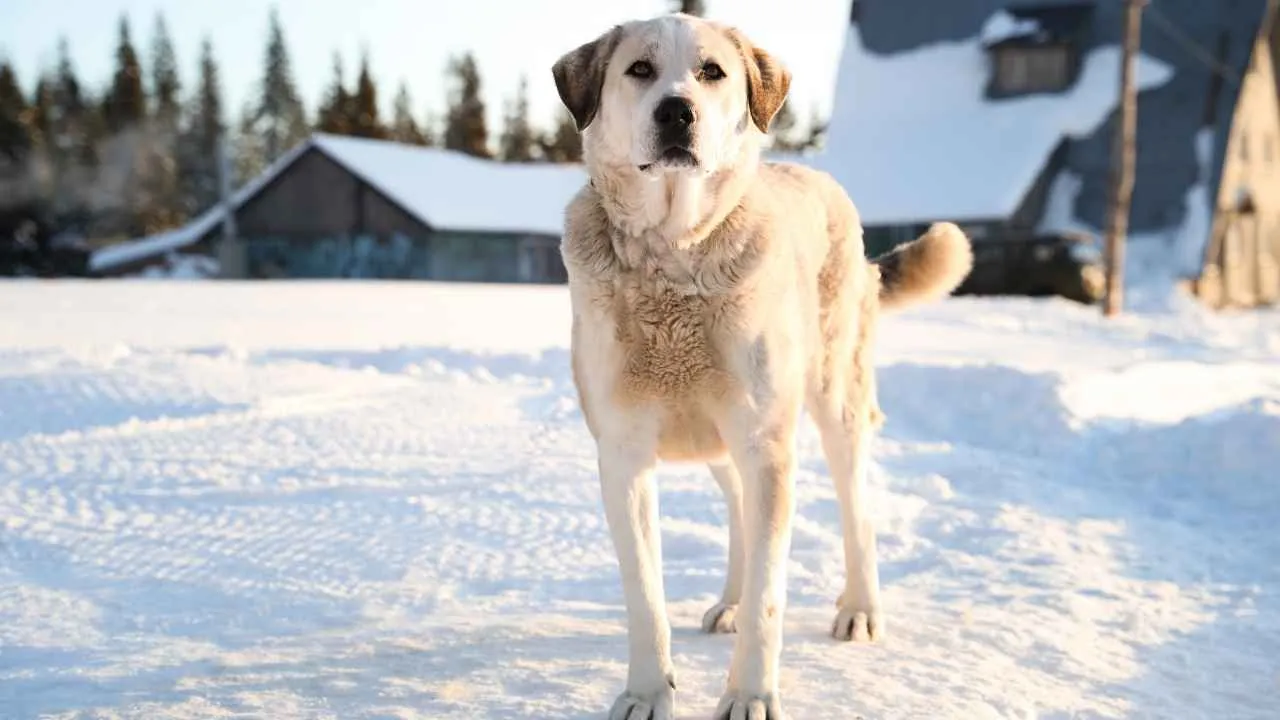
The Akbash, also known as the Akbaş Çoban Köpeği or Coban Kopegi, is a powerful white guardian dog originating from the plains and mountains of western Turkey over 3,000 years ago.
Standing between 28–34 inches tall and weighing 90–130 pounds, this breed is both large and muscular. Its pure white, weather-resistant double coat was selectively bred to help the dog blend with livestock.
The Akbash has a wedge-shaped head, strong jaws, almond-shaped eyes, and a long feathered tail, offering a striking and noble presence. Traditionally developed to defend sheep from predators, their lineage combines mastiff-like strength with the agility of gazehounds.
Care Needs
These livestock guardian dogs thrive best in spacious, semi-rural, or rural settings where they can patrol and remain mentally engaged. Though their energy levels are moderate, they require at least one long walk daily paired with occasional play sessions to maintain fitness and prevent weight gain.
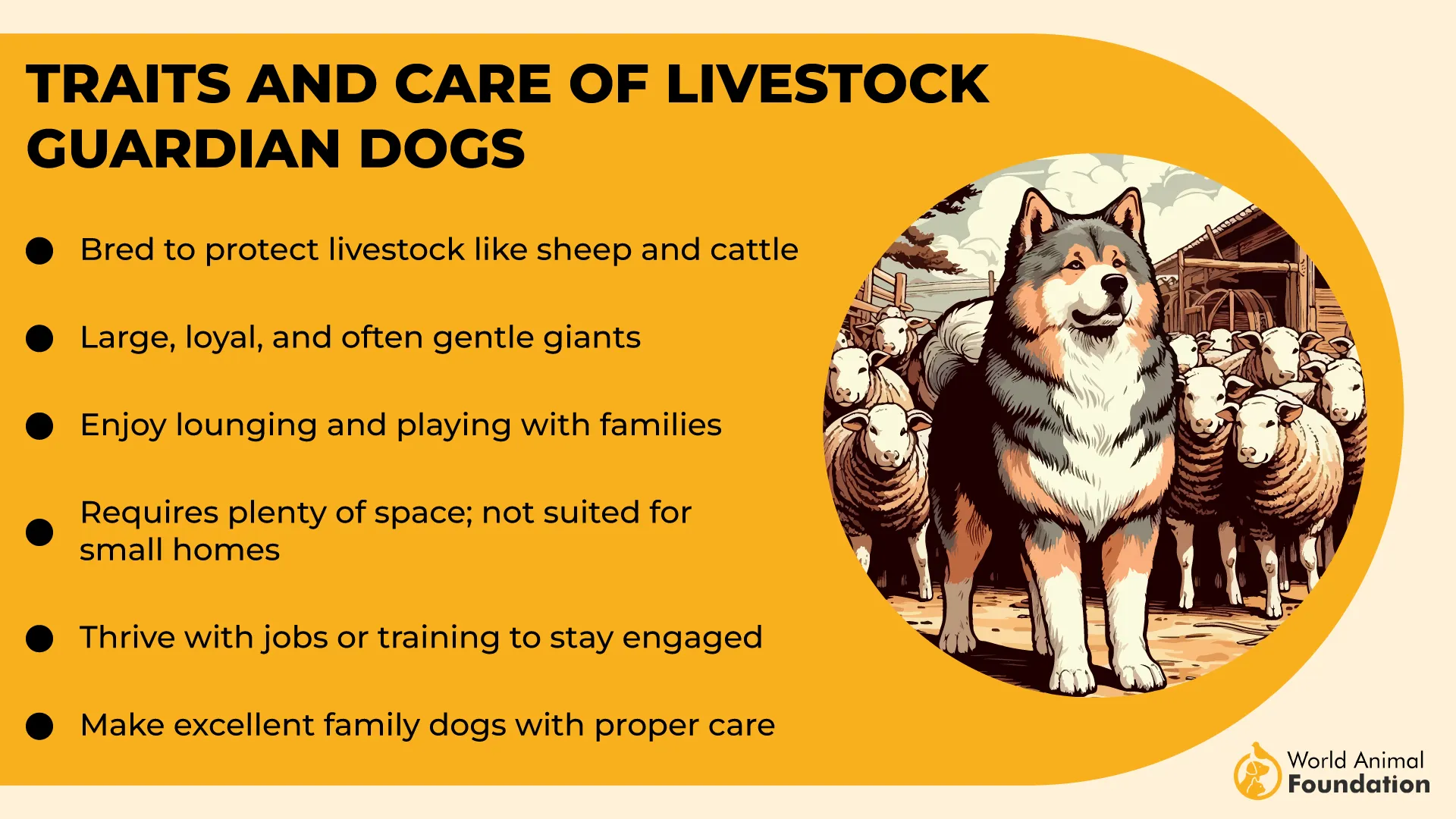
Their thick coat needs brushing once or twice a week, especially during seasonal shedding. Due to their independent nature, early training and socialization are essential. Regular veterinary visits are also crucial to monitor for hip dysplasia, bloat, and other large-breed concerns.
Fun Fact: In the 1980s, the U.S. Department of Agriculture enlisted Akbash in its Predator Control Program due to their impressive guarding abilities.
2. Central Asian Shepherd Dog
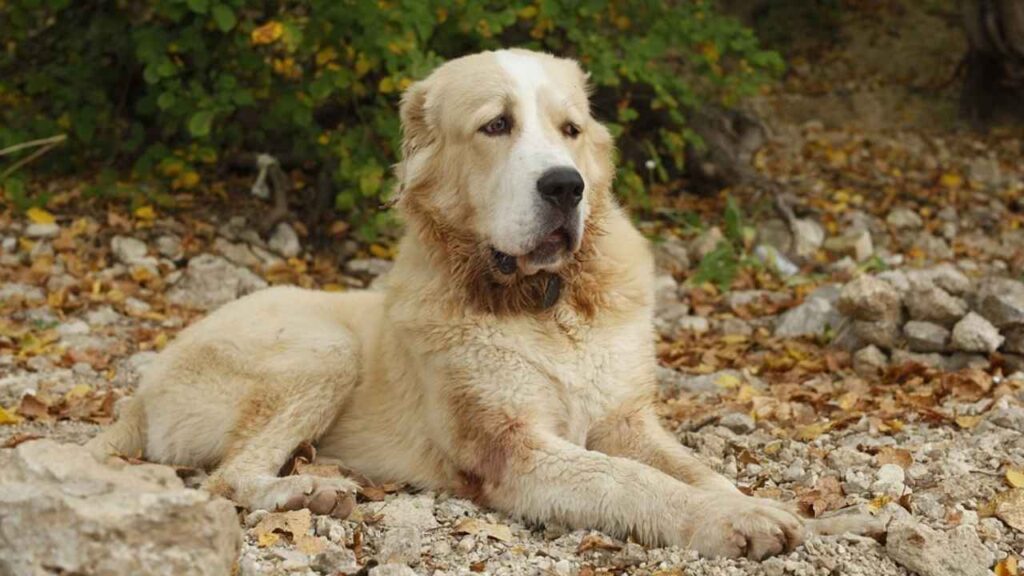
The Central Asian Shepherd Dog, also known as the Alabai or Turkmen Wolf-Hound, is an ancient breed developed over 4,000 years through natural selection across Central Asia’s harsh terrain—from the Caspian Sea to China. According to the AKC, they are bold and confident dogs.
These powerful working dogs were originally used to protect livestock from predators like wolves and bears. Standing 24 to 32 inches tall and weighing between 88 to 110 pounds, this breed exudes strength, balance, and endurance.
Their dense coat comes in a variety of colors, but white and brindle are most common in line with breed standards. Known for being calm, courageous, and independent, they are not suited for novice dog owners.
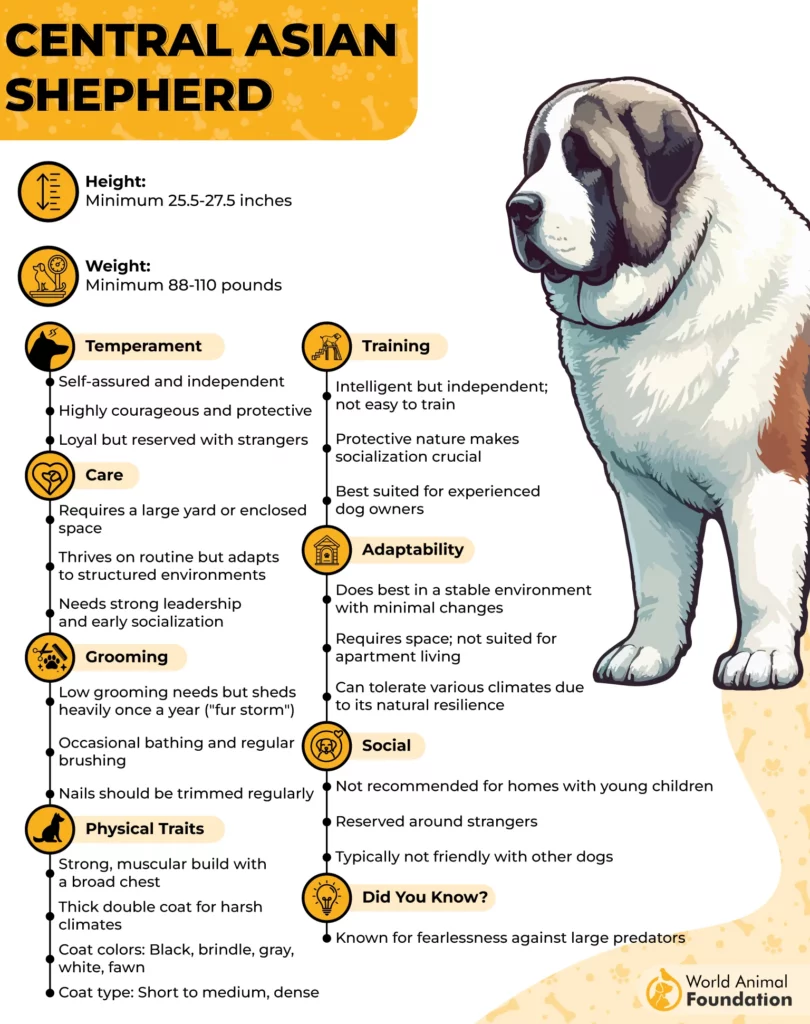
Care Needs
Despite their rugged nature, Central Asian Shepherd Dogs have relatively low grooming demands. Their thick coats shed seasonally—most heavily in spring and fall—requiring extra brushing during these times to manage loose fur.
Routine care includes nail trimming, dental hygiene, and checking ears for debris. They thrive in homes with ample outdoor space and need regular, moderate exercise to stay fit and mentally stimulated.
Interesting Fact: This breed’s fearless temperament enables it to stand up to large predators without hesitation.
3. Dogo Argentino
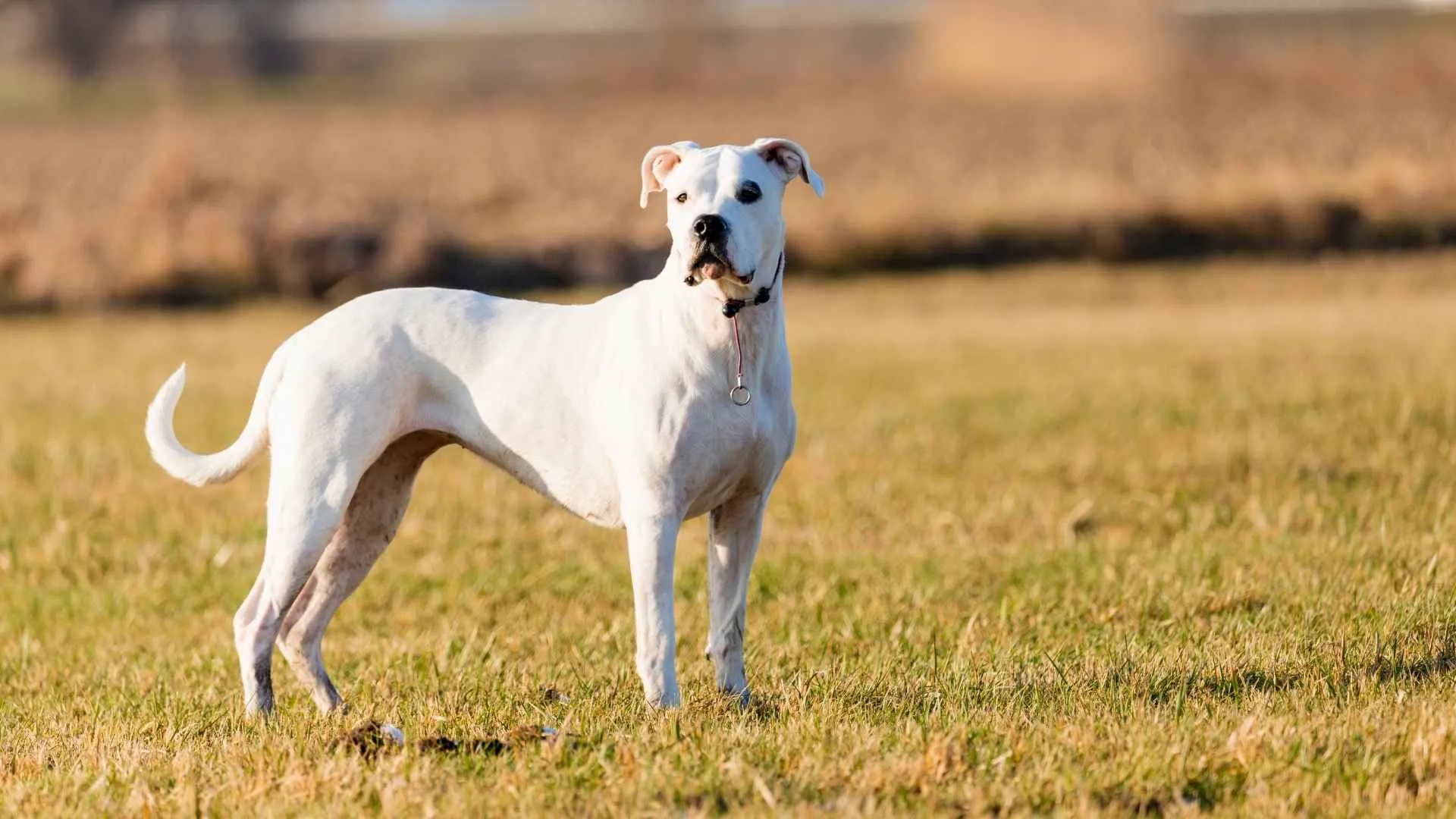
The Dogo Argentino, also known as the Argentine Mastiff or Argentinian Dogo, is a formidable white guardian breed developed in Argentina in the 1920s by Dr. Antonio Nores Martinez. WebMD states that Dogo Argentinos are known for being courageous and trustworthy dogs.
Originally bred from a mix of strong working and hunting dogs, including the Cordoba fighting dog, it was created for tracking and capturing big game such as wild boar and mountain lions. This muscular, athletic breed typically weighs between 80 to 100 pounds and stands 24 to 26.5 inches tall.
Instantly recognizable by its short, smooth white coat—sometimes marked with a small dark eye patch known as a pirata—this breed is celebrated for its courage, stamina, and loyalty. The Dogo belongs to the Working Group and has a life expectancy of 9 to 15 years.
Despite its powerful frame and serious expression, the Dogo is a loving family companion known for its affectionate nature and vigilance.
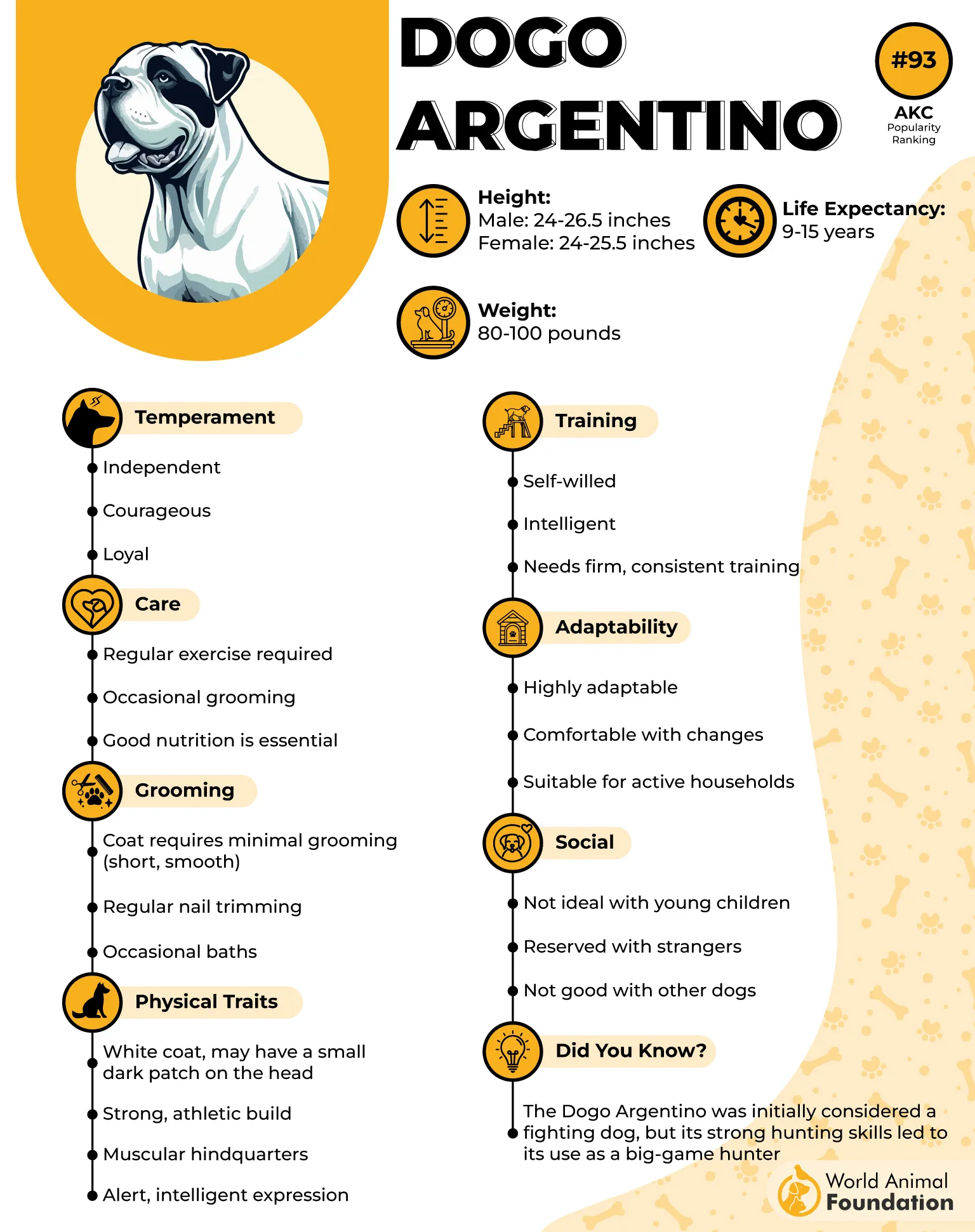
Care Needs
Caring for a Dogo Argentino requires dedication. These dogs thrive on regular mental and physical stimulation, needing at least an hour of exercise daily to prevent restlessness. Their short coat is low-maintenance but benefits from occasional brushing to manage shedding.
Dental hygiene, regular nail trimming, and ear checks are crucial to prevent health issues. The Dogo also requires consistent training and early socialization due to its strong prey drive and independent temperament. While generally healthy, routine vet visits are essential for early detection of genetic concerns.
Fun Fact: The Dogo Argentino is the first and only Argentine breed recognized by the Fédération Cynologique Internationale (FCI).
4. American Eskimo Dog
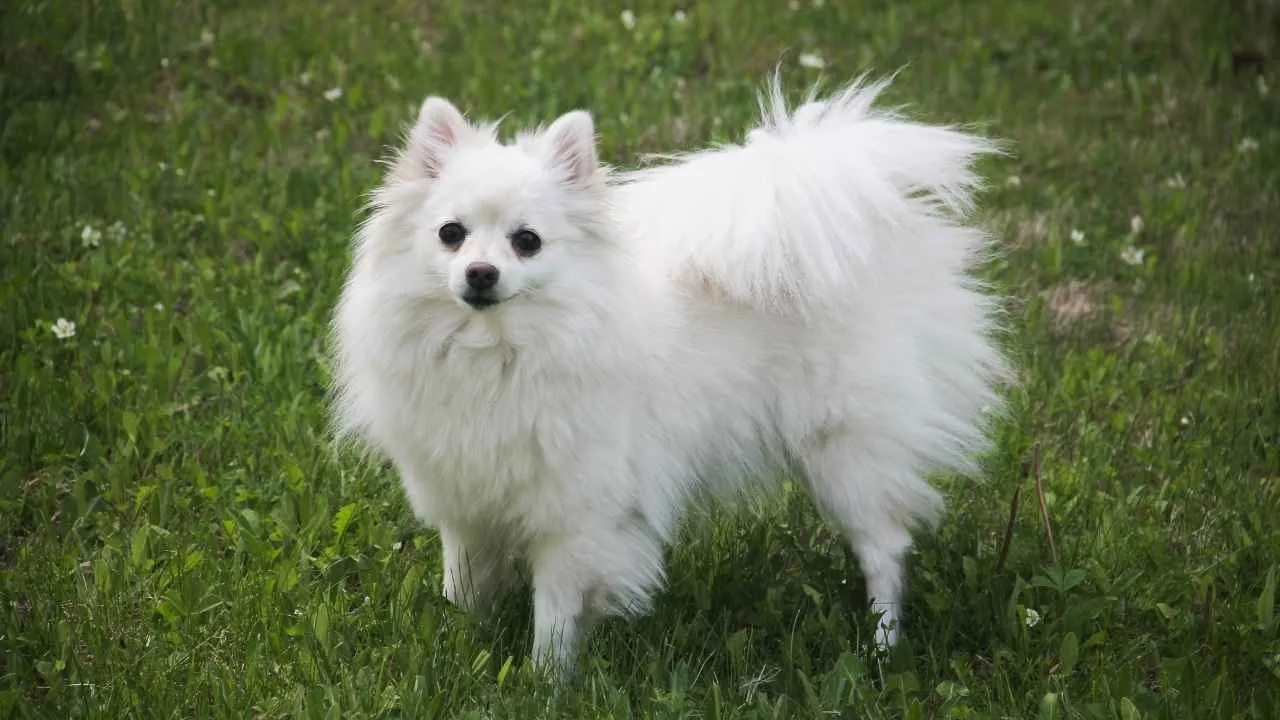
Fluffy and foxlike, the American Eskimo Dog—also called the “Eskie” or formerly known as the American Spitz—is an eye-catching breed from the United States with strong German roots. PetMD explains that before arriving in the United States with German immigrants, the American Eskimo Dog was used for herding and guarding livestock.
Descended from the German Spitz, this breed gained popularity as a circus performer in the late 19th century before transitioning to a beloved household companion. Eskies come in three sizes: toy (9–12 inches, 6–10 pounds), miniature (12–15 inches, 10–20 pounds), and standard (15–19 inches, 25–35 pounds).
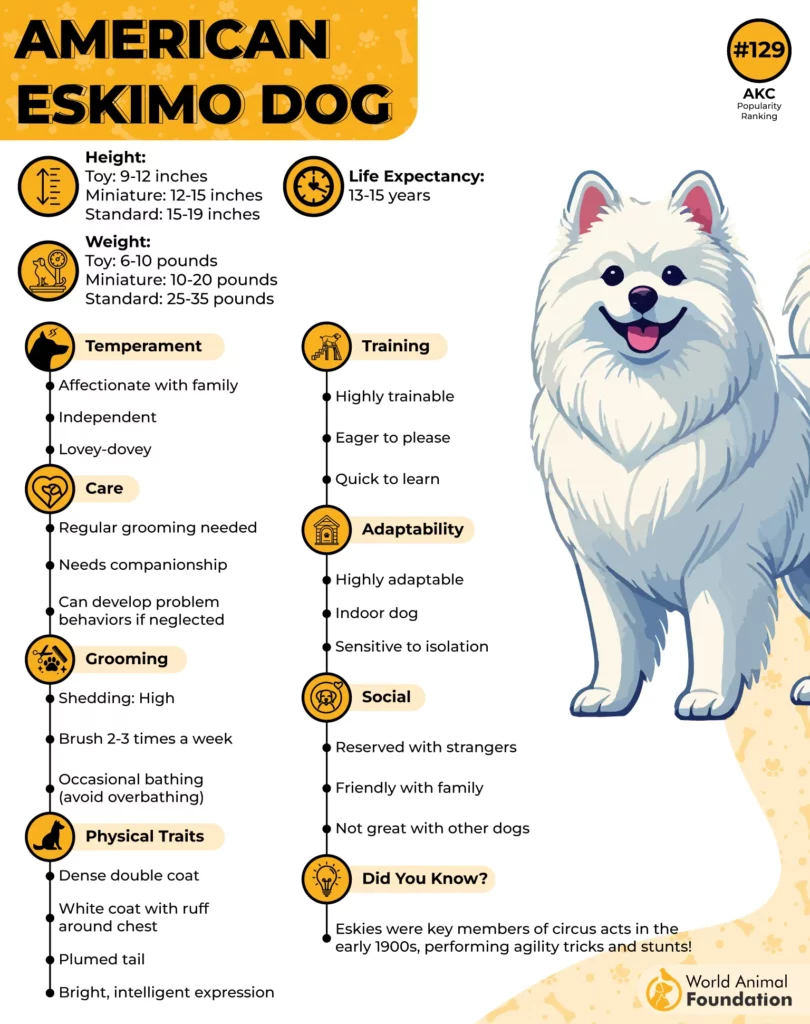
Their hallmark is a dense, white or cream double coat with a thick mane-like ruff, a plumed tail curled over the back, and expressive black facial points. Though not hypoallergenic, their animated personalities and alertness make them excellent watchdogs despite their non-aggressive temperament. Belonging to the Non-Sporting Group, Eskies boast a lifespan of 13–15 years.
Care Needs
These livestock guardian breeds are intelligent and high-energy, demanding daily physical and mental stimulation. Their thick double coat sheds heavily, especially during seasonal changes, and requires brushing several times a week to prevent matting and manage shedding.
While most Eskies don’t need regular professional grooming, their coat still needs routine upkeep to stay clean and healthy. Social by nature, Eskies need companionship and can develop behavioral issues if neglected or under-stimulated. A structured routine that includes training, interactive play, and regular walks helps keep them happy and well-behaved.
Fact: American Eskimo Dogs were once a popular circus attraction thanks to their dazzling appearance and quick-learning nature.
5. Bulldog
The Bulldog, often referred to as the English Bulldog, is a muscular and compact breed instantly recognizable by its distinctive “sourmug” expression, loose skin, furrowed brow, and pushed-in nose. Bulldogs typically stand around 14–15 inches tall and weigh up to 50 pounds.
Their short, glossy coats can be white or come in combinations like brindle, red, and fawn. While Bulldogs aren’t traditionally known as aggressive guard dogs, their protective instinct and loyalty make them reliable defenders of their home when needed. They become wonderful family pets.
They form strong bonds with their families and can become especially possessive, even over food, necessitating proper supervision during mealtimes, particularly around children.
Care Needs
Bulldogs require daily care tailored to their unique build. Their wrinkled skin must be cleaned and dried regularly to prevent infections, and their short snouts make them vulnerable to overheating. Avoid exercise during peak heat and ensure access to shade and water.
Though often labeled lazy, Bulldogs benefit from at least an hour of moderate daily exercise to maintain a healthy weight. Positive reinforcement training is essential, given their stubborn streak. Early socialization can reduce food-related aggression and ease interactions with other dogs.
Fun Fact: Despite their tough exterior, Bulldogs love to cuddle and can often be found trying to squeeze into your lap for affection.
6. Great Pyrenees
A majestic and serene guardian, the Great Pyrenees—also known as the Pyr—traces its roots to the Pyrenees Mountains between France and Spain. Originally bred to safeguard sheep from wolves, this powerful yet calm breed later gained noble status, even being named the “Royal Dog of France” in the 17th century.
Male Pyrs stand 27 to 32 inches tall and weigh 100 to 150 pounds, while females typically measure 25 to 29 inches and weigh 85 to 110 pounds. These dogs boast a thick, weather-resistant double coat, predominantly white but sometimes marked with shades of tan, gray, or badger.
Known for their gentle, patient, and protective temperament, they belong to the Working Group and live approximately 10 to 12 years.
Care Needs
The Great Pyrenees requires consistent grooming to manage its dense coat, especially during seasonal shedding. Weekly brushing is usually sufficient, but may increase during heavy shedding periods.
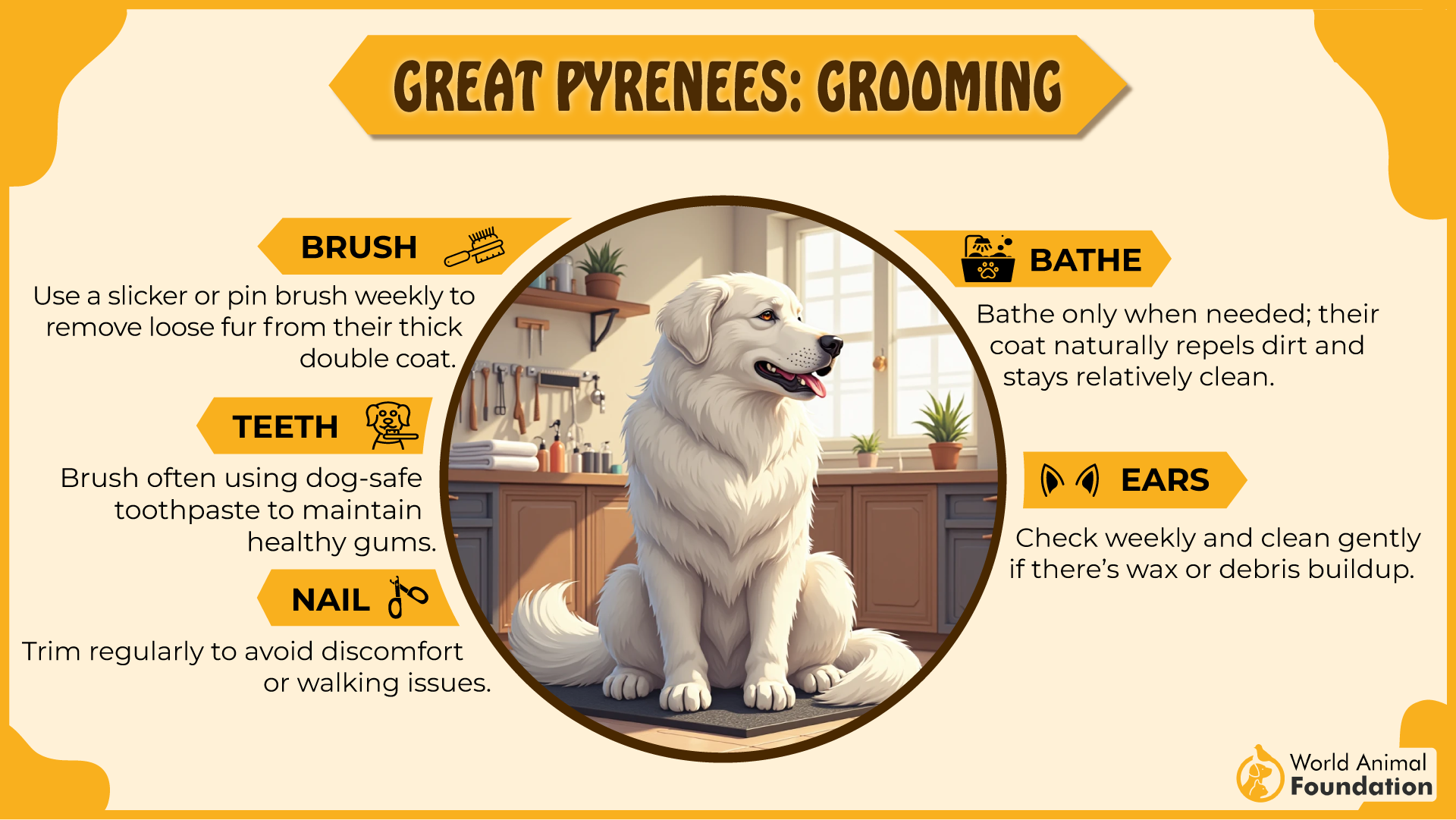
While they are relatively calm indoors, Pyrs benefit from daily outdoor exercise to stay mentally and physically fit. Their thick coats make them well-suited to colder climates, but care must be taken in warmer weather to avoid overheating.
Due to their size, joint health should be monitored; common concerns include hip and elbow dysplasia, as well as bloat. Early training and socialization are essential, given their independent nature and natural guarding instincts.
Fun Fact: This breed features unique double dewclaws on its rear legs—believed to have served as “snowshoes” for better grip in mountainous terrain.
7. Kuvasz
Also known as the “Kuv,” the Kuvasz is a historic white guard dog breed with deep roots in Hungary. This regal guardian likely traces its lineage back to Central Asia and was once prized by Hungarian nobility during the Middle Ages for its unmatched watchdog abilities.
With a thick, medium-length white coat and a stately, wedge-shaped head, the Kuvasz exudes both elegance and power. Males typically reach heights of 28 to 30 inches and weigh between 100 to 115 pounds, while females are slightly smaller. Despite its size, this breed is agile and surprisingly graceful in motion.
Care Needs
The Kuvasz’s dense double coat needs regular grooming—brushing once or twice weekly helps manage shedding and maintain its natural luster. Expect more intensive grooming twice a year during seasonal shedding. These dogs thrive with consistent exercise and enjoy long daily walks or runs.
Though dignified indoors, these companion dogs need space to roam and stretch their legs. Nail trimming, ear checks, and dental hygiene should be part of their routine care.
A fascinating fact: Kuvaszok are so instinctively loyal and discerning that they were once trusted by kings as both protectors and companions.
Conclusion
When it comes to protection, white guard dog breeds combine striking appearance with dependable loyalty. Unlike herding dogs, these canines are bred specifically to protect sheep, livestock, and family from potential threats, whether human or animal. Their instincts are rooted deeply in centuries of purposeful breeding, making them not just guardians of the field but also of the home.
According to the American Kennel Club, many of these white and large dogs possess affectionate yet assertive personalities, allowing them to assess animal behavior and act accordingly. While they’re often wary of strangers and other animals, their devotion to their human families is unwavering.
Though typically not suited for small dog roles, some can still adjust to domestic life with proper training. These breeds are more than just a beautiful white coat—they are protectors with courage, intelligence, and heart. For anyone seeking both security and companionship, white guardian breeds stand tall—literally and figuratively.


